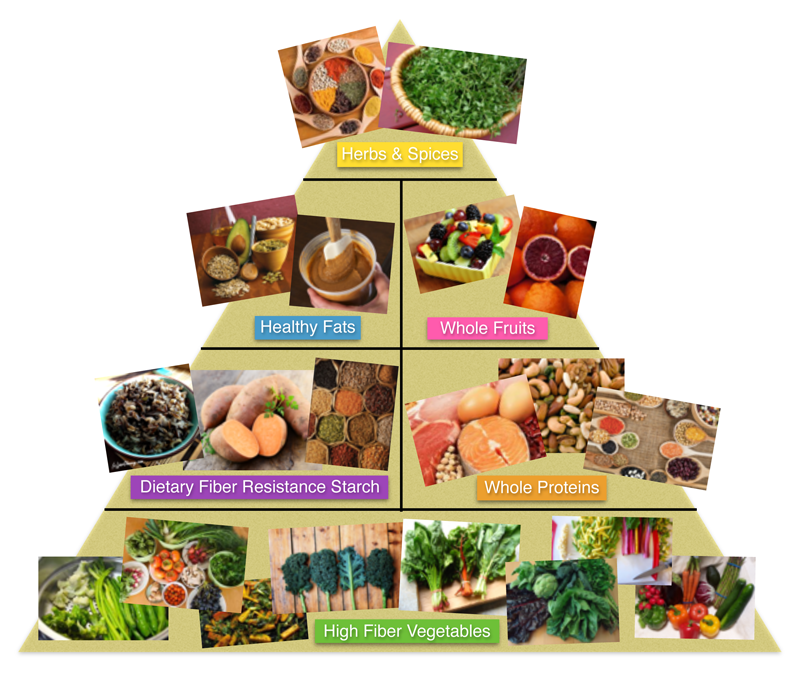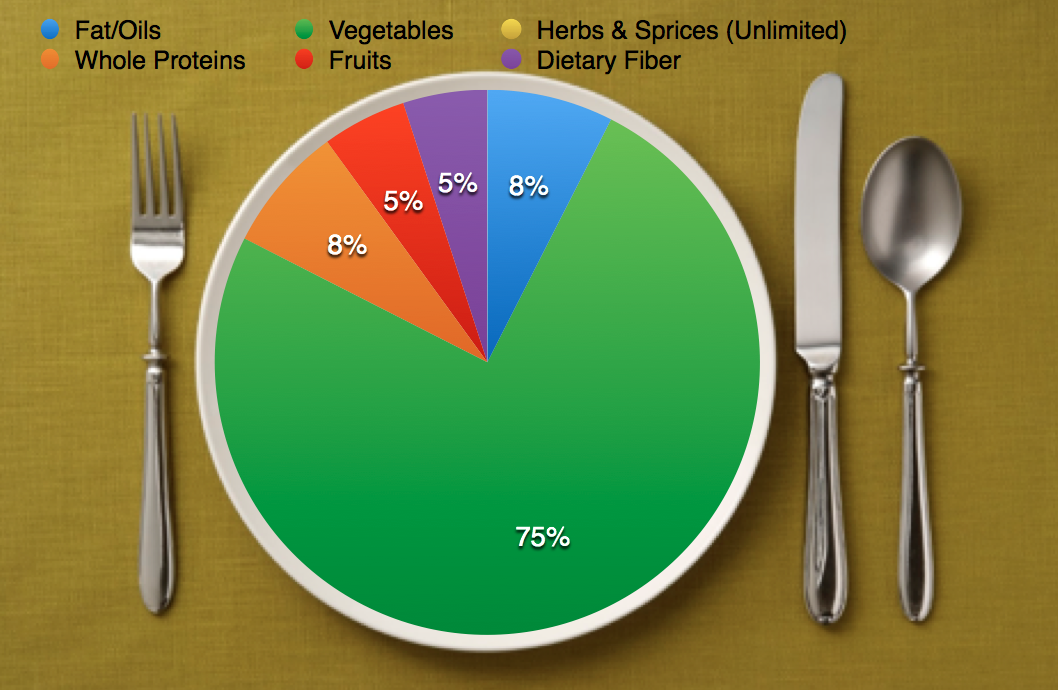About the REID Program
The Reduced Excitatory Inflammatory Diet (REID) is a food lifestyle focused on reducing excitatory and inhibitory signaling imbalance (i.e. improving neurotransmitter balance) and reducing inflammation through a balanced whole food approach. Some of the most prevalent excitatory and inflammatory foods are gluten, casein (class of proteins found in dairy), soy, corn (to a lesser extent) and ready-to-eat or commercially processed foods with various food additives, particularly those containing free glutamate and aspartate. These foods can be problematic because of their high concentration of unbound/free glutamate (glutamic acid). Unbound or free glutamate (aka MSG) is most commonly found in processed foods as a food additive or created as a byproduct of commercial food manufacturing processes. For more information, Dr. Katherine Reid has a book available on the subject, Fat, Stressed, and Sick; MSG, Processed Food, and America’s Health Crisis or she offers personalized consulting services, click here, to help families desiring specialized guidance.
In general, REID places a strong emphasis on the following key components:
- Consume whole foods over commercially processed foods and strictly eliminating food additives and commercially processed foods that contain excitatory substances like free glutamate (among its various names) and aspartate. In addition to the ingredients found here, it is also important to avoid gluten, casein (class of proteins found in dairy), soy, corn (to a lesser extent) due to the higher levels of free glutamate created as a byproduct of modern processing techniques. Many REID families have witnessed extreme behavioral reactions following consumption of these foods, with behaviors lasting days. Fortunately, this sensitivity often decreases with more time on REID, once inflammation and glutamate levels are lowered (our family included).
- Reduce total inflammation load. When inflammation is high, glutamate released from our own cells will be high (glutamate is also produced by the body), and when glutamate is high, inflammation is high. Working to lower inflammation will improve overall health, decrease glutamate levels and break the cell damaging cyclical glutamate/inflammation signals. Common household cleaners, pesticides, herbicides, mold, EMF’s, etc. should all be considered when working to lower the inflammatory load. This also includes inflammatory food sources including refined sugar, inflammatory oils, food dyes and working to resolve individual food sensitivities/intolerances (for many this includes processed grains). Glutamate signaling is intertwined with inflammation and glutamate is actually what causes the cellular damage.
- Increase consumption of high fiber, nutrient rich vegetables. Proper nutrition can help re-establish immune balance and protect against glutamate damage. Slowly* working to increase fiber is key and working your way to more raw vegetables is important.
- Choosing whole foods over supplements. Too many supplements can excite and inflame individuals. REID encourages nutrients through food first and then taking a targeted nutrient supplement support in a small number of individuals. We work with individuals to determine best nutrient support and which supplement brands, if warranted, are without additives.
- Achieve microbiome balance through foods.Most microbial activity should occur in the large intestine. REID works with individuals with varying microbiome imbalance issues from too much microbial activity in small intestine to too little nutrients reaching the microbes in large intestine. Proper motility function is also important and can be restored through various foods and herbs.
- Reduce consumption of animal meat. While REID is not a vegan diet, the food lifestyle does stress the importance of avoiding over consumption of animal meat and eliminating dairy. Over consumption of animal protein increases toxins produced from microbial fermentation. Protein fermentation in the gastrointestinal tract contributes to increased inflammation, glutamate and other inflammatory byproducts like increased ammonia, phenols, amines, hydrogen sulfide and increases microbes that thrive on amino acid metabolism like Clostridia. Maintaining proper proportions of food in the diet is nearly just as important as the removal of inflammatory food sources.
- Consume whole foods in variety. The best way to create diversity in your microflora is to consume a variety of whole foods. Overconsumption of any one food can contribute to dysbiosis, inflammation and glutamate signaling. REID encourages incorporating a variety of whole foods and breaking habits that limit food choices. Even individuals that start off with limited diets because of limited tolerance often find the REID approach expands their food options.
- Tailor the lifestyle to meet you and your family’s needs.We work with individuals to tailor to food culture, preferences and lifestyle. We can also support what tests would be helpful to determine which foods work best with your current state of inflammation or tolerance. Individual consults are encouraged to help families tailor to meet specific needs and help with the food lifestyle journey. Individual factors such as cellular structure, metabolic capabilities, gene SNP’s, underlying infections and inflammation are just some of the factors that may require specific tailored guidelines. Depending on the severity and complexity of your health issues, some may see enough improvement by implementing general REID guidelines, while others may need more tailored support.
The ideal REID plate: 75% Raw & Cooked Vegetables, 15% Protein and Fats (<10% from animal meats), and 10% fruits and other fiber sources.
The REID Program is a lifestyle-changing diet created to help individuals interested in removing food toxins from their diet and pantry. Most foods that are fresh, natural, and unaltered are acceptable in the diet, but there are many companies now that are creating food products without harmful additives that are healthy and good for us. Please see the Pantry page for food products that are “approved” as a part of the diet.
The REID Program (Reduced Excitatory Inflammatory Diet) suggests daily food ratios, with the greatest ratio consisting of high fiber vegetables. You can find those ratios below.
The food pyramid is another quick reference and overview of the REID Program food categories. These are foods recommended for your daily dietary choices.
Another resource you may want to use is our list of food ingredients that contain hidden free glutamate. The food ingredients on this list represent the various ways free glutamate can be identified on the required food label. We call it the Katie “No-No” List!
The REID Diet is based on whole foods in the right proportions. The beauty of creating a diet from whole foods is that nutrient content in whole foods is overlapping, and one food often satisfies a number of nutritional needs from different food groups. For example, nuts possess three food groups – protein, fiber, and fats.
In the REID program, you will get your nutrients from vegetables first and foremost, and then from the other food groups – equally important, but in lesser quantities.
The REID Perfect Plate food proportions recommended by Dr. Katherine Reid, PhD are 75% Raw & Cooked “High Fiber” Vegetables, 15% Protein and Fats, and 10% Dietary Fiber Resistant-Starch and Fruits.
The Reid Diet is based on whole foods in the right proportions. The beauty of creating a diet from whole foods is that nutrient content in whole foods is overlapping, and one food often satisfies a number of nutritional needs from different food groups. For example, nuts possess three food groups – protein, fiber, and fats.
In the REID program, you will get your nutrients from vegetables first and foremost, and then from the other food groups – equally important, but in lesser quantities.
The Reid Perfect Plate food proportions recommended by Dr. Katherine Reid, PhD are 75% Raw & Cooked “High Fiber” Vegetables, 15% Protein and Fats, and 10% Dietary Fiber Resistant-Starch and Fruits.



